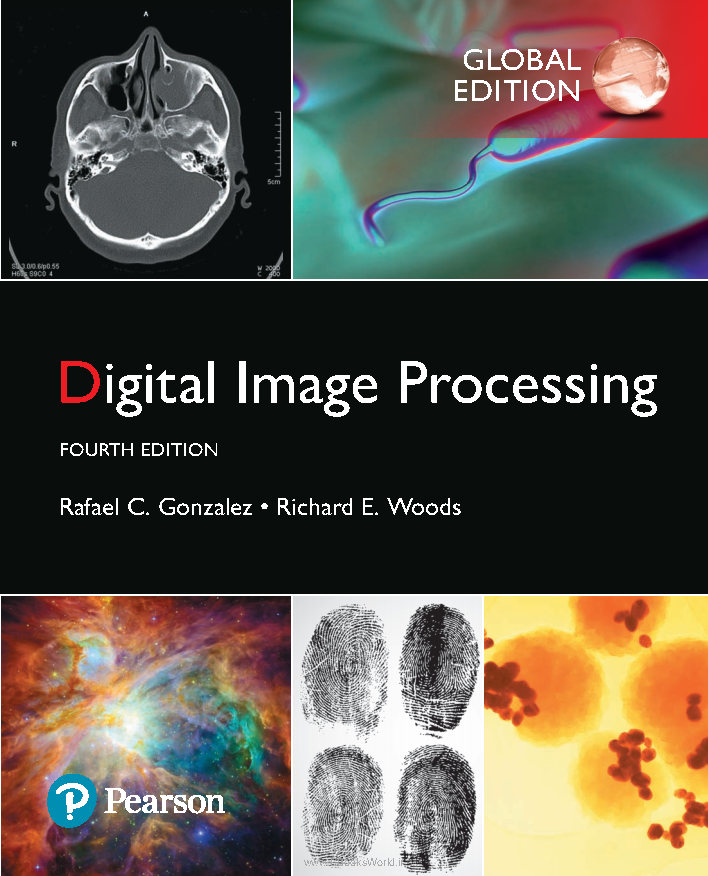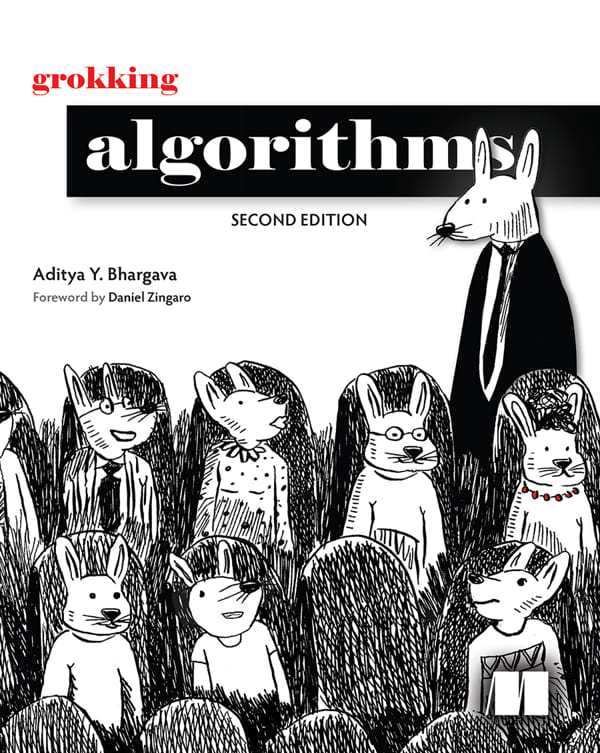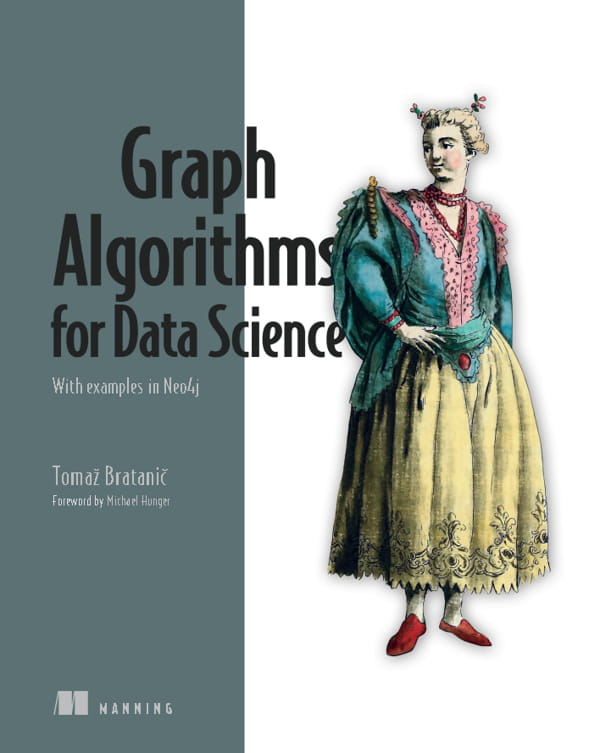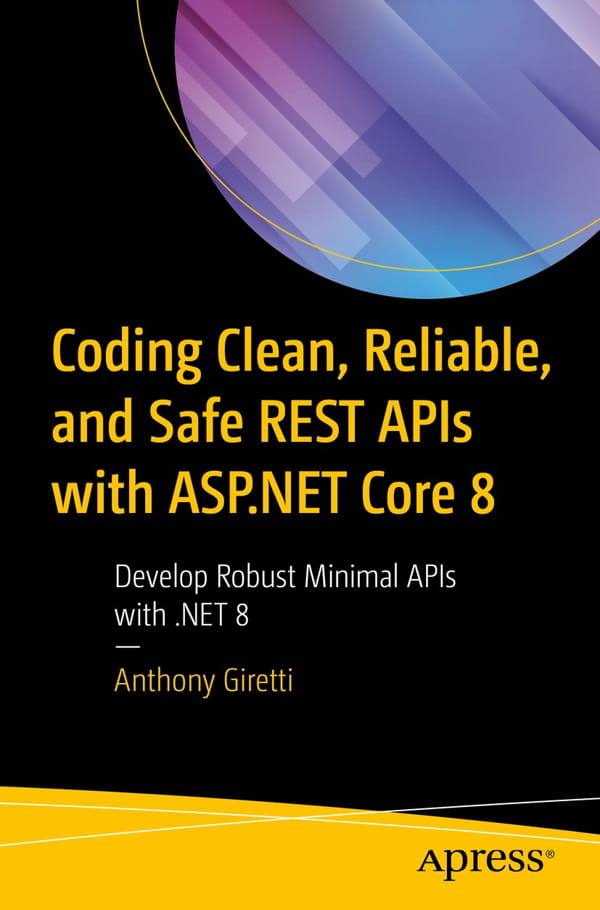Digital Image Processing, 4th Edition

در ویرایش چهارم کتاب پردازش تصویر دیجیتالی (Digital Image Processing 4th Edition)، مباحثی چون یادگیری عمیق و شبکههای عصبی عمیق شامل شبکههای عصبی کانولوشن، تغییر شکل مقیاس ثابت (SIFT)، مناطق اکسترمم حداکثر پایدار، برش گراف، خوشه بندی k-means و سوپر پیکسل ها، خطوط فعال (مارپیچها و مجموعههای مسطح) و تطبیق دقیق هیستوگرام آورده شده است. بهبودهای اساسی در سازمان دهی مجدد ارائه موضوعات مربوط به تبدیلات تصویر به شکل منسجمتر و بحث هستههای فضایی و فیلتر کردن فضایی انجام گرفته است.
بازنگریها و اضافات عمده ای به مثالها و تکالیف در طول کتاب انجام شده است. برای اولین بار ما پروژههای متلب را در انتهای هر فصلی قرار داده ایم پکیجهای پشتیبانی کامپایل شده شامل راه حل ها، پایگاه دادههای تصاویر و نمونه کدها را نیز در اختیارتان قرار داده ایم.
نسخههای Global Edition و معمولی ویرایش چهارم کتاب پردازش تصویر دیجتیال قرار گرفته شدند.
Table of Contents
1 Introduction
1.1 What is Digital Image Processing?
1.2 The Origins of Digital Image Processing
1.3 Examples of Fields that Use Digital Image Processing
Gamma-Ray Imaging
X-Ray Imaging
Imaging in the Ultraviolet Band
Imaging in the Visible and Infrared Bands
Imaging in the Microwave Band
Imaging in the Radio Band
Other Imaging Modalities
1.4 Fundamental Steps in Digital Image Processing
1.5 Components of an Image Processing System
2 Digital Image Fundamentals
2.1 Elements of Visual Perception
Structure of the Human Eye
Image Formation in the Eye
Brightness Adaptation and Discrimination
2.2 Light and the Electromagnetic Spectrum
2.3 Image Sensing and Acquisition
Image Acquisition Using a Single Sensing Element
Image Acquisition Using Sensor Strips
Image Acquisition Using Sensor Arrays
A Simple Image Formation Model
2.4 Image Sampling and Quantization
Basic Concepts in Sampling and Quantization
Representing Digital Images
Linear vs. Coordinate Indexing
Spatial and Intensity Resolution
Image Interpolation
2.5 Some Basic Relationships Between Pixels
Neighbors of a Pixel
Adjacency, Connectivity, Regions, and Boundaries
Distance Measures
2.6 Introduction to the Basic Mathematical Tools Used in Digital Image Processing
Elementwise versus Matrix Operations
Linear versus Nonlinear Operations
Arithmetic Operations
Set and Logical Operations
Basic Set Operations
Logical Operations
Fuzzy Sets
Spatial Operations
Single-Pixel Operations
Neighborhood Operations
Geometric Transformations
Image Registration
Vector and Matrix Operations
Image Transforms
Probability and Random Variables
3 Intensity Transformations and Spatial Filtering
3.1 Background
The Basics of Intensity Transformations and Spatial Filtering
About the Examples in this Chapter
3.2 Some Basic Intensity Transformation Functions
Image Negatives
Log Transformations
Power-Law (Gamma) Transformations
Piecewise Linear Transformation Functions
Contrast Stretching
Intensity-Level Slicing
Bit-Plane Slicing
3.3 Histogram Processing
Histogram Equalization
Histogram Matching (Specification)
Exact Histogram Matching (Specification)
Foundation
Ordering
Computing the neighborhood averages and extracting the K-tuples:
Exact Histogram Specification Algorithm
Local Histogram Processing
Using Histogram Statistics for Image Enhancement
3.4 Fundamentals of Spatial Filtering
The Mechanics of Linear Spatial Filtering
Spatial Correlation and Convolution
Separable Filter Kernels
Some Important Comparisons Between Filtering in the Spatial and Frequency Domains
A Word about how Spatial Filter Kernels are Constructed
3.5 Smoothing (Lowpass) Spatial Filters
Box Filter Kernels
Lowpass Gaussian Filter Kernels
Order-Statistic (Nonlinear) Filters
3.6 Sharpening (Highpass) Spatial Filters
Foundation
Using the Second Derivative for Image Sharpening—The Laplacian
Unsharp Masking and Highboost Filtering
Using First-Order Derivatives for Image Sharpening—The Gradient
3.7 Highpass, Bandreject, and Bandpass Filters from Lowpass Filters
3.8 Combining Spatial Enhancement Methods
3.9 Using Fuzzy Techniques for Intensity Transformations and Spatial Filtering
Introduction
Principles of Fuzzy Set Theory
Definitions
Some Common Membership Functions
Using Fuzzy Sets
Using Fuzzy Sets for Intensity Transformations
Using Fuzzy Sets for Spatial Filtering
4 Filtering in the Frequency Domain
4.1 Background
A Brief History of the Fourier Series and Transform
About the Examples in this Chapter
4.2 Preliminary Concepts
Complex Numbers
Fourier Series
Impulses and their Sifting Properties
The Fourier Transform of Functions of One Continuous Variable
Convolution
4.3 Sampling and the Fourier Transform of Sampled Functions
Sampling
The Fourier Transform of Sampled Functions
The Sampling Theorem
Aliasing
Function Reconstruction (Recovery) from Sampled Data
4.4 The Discrete Fourier Transform of One Variable
Obtaining the DFT from the Continuous Transform of a Sampled Function
Relationship Between the Sampling and Frequency Intervals
4.5 Extensions to Functions of Two Variables
The 2-D Impulse and Its Sifting Property
The 2-D Continuous Fourier Transform Pair
2-D Sampling and the 2-D Sampling Theorem
Aliasing in Images
Extensions from 1-D Aliasing
Image Resampling and Interpolation
Aliasing and Moiré Patterns
The 2-D Discrete Fourier Transform and Its Inverse
4.6 Some Properties of the 2-D DFT and IDFT
Relationships Between Spatial and Frequency Intervals
Translation and Rotation
Periodicity
Symmetry Properties
Fourier Spectrum and Phase Angle
The 2-D Discrete Convolution Theorem
Summary of 2-D Discrete Fourier Transform Properties
4.7 The Basics of Filtering in the Frequency Domain
Additional Characteristics of the Frequency Domain
Frequency Domain Filtering Fundamentals
Summary of Steps for Filtering in the Frequency Domain
Correspondence Between Filtering in the Spatial and
Frequency Domains
4.8 Image Smoothing Using Lowpass Frequency Domain Filters
Ideal Lowpass Filters
Gaussian Lowpass Filters
Butterworth Lowpass Filters
Additional Examples of Lowpass Filtering
4.9 Image Sharpening Using Highpass Filters
Ideal, Gaussian, and Butterworth Highpass Filters from Lowpass Filters
The Laplacian in the Frequency Domain
Unsharp Masking, High-boost Filtering, and High-Frequency-Emphasis Filtering
Homomorphic Filtering
4.10 Selective Filtering
Bandreject and Bandpass Filters
Notch Filters
4.11 The Fast Fourier Transform
Separability of the 2-D DFT
Computing the IDFT Using a DFT Algorithm
The Fast Fourier Transform (FFT)
5 Image Restoration and Reconstruction
5.1 A Model of the Image Degradation/Restoration Process
5.2 Noise Models
Spatial and Frequency Properties of Noise
Some Important Noise Probability Density Functions
Gaussian Noise
Rayleigh Noise
Erlang (Gamma) Noise
Exponential Noise
Uniform Noise
Salt-and-Pepper Noise
Periodic Noise
Estimating Noise Parameters
5.3 Restoration in the Presence of Noise Only—Spatial Filtering
Mean Filters
Arithmetic Mean Filter
Geometric Mean Filter
Harmonic Mean Filter
Contraharmonic Mean Filter
Order-Statistic Filters
Median Filter
Max and Min Filters
Midpoint Filter
Alpha-Trimmed Mean Filter
Adaptive Filters
Adaptive, Local Noise Reduction Filter
Adaptive Median Filter
5.4 Periodic Noise Reduction Using Frequency Domain Filtering
More on Notch Filtering
Optimum Notch Filtering
5.5 Linear, Position-Invariant Degradations
5.6 Estimating the Degradation Function
Estimation by Image Observation
Estimation by Experimentation
Estimation by Modeling
5.7 Inverse Filtering
5.8 Minimum Mean Square Error (Wiener) Filtering
5.9 Constrained Least Squares Filtering
5.10 Geometric Mean Filter
5.11 Image Reconstruction from Projections
Introduction
Principles of X-ray Computed Tomography (CT)
Projections and the Radon Transform
Backprojections
The Fourier-Slice Theorem
Reconstruction Using Parallel-Beam Filtered Backprojections
Reconstruction Using Fan-Beam Filtered Backprojections
6 Wavelet and Other Image Transforms
6.1 Preliminaries
6.2 Matrix-based Transforms
Rectangular Arrays
Complex Orthonormal Basis Vectors
Biorthonormal Basis Vectors
6.3 Correlation
6.4 Basis Functions in the Time-Frequency Plane
6.5 Basis Images
6.6 Fourier-Related Transforms
The Discrete hartley Transform
The Discrete Cosine Transform
The Discrete Sine Transform
6.7 Walsh-Hadamard Transforms
6.8 Slant Transform
6.9 Haar Transform
6.10 Wavelet Transforms
Scaling Functions
Wavelet Functions
Wavelet Series Expansion
Discrete Wavelet Transform in One Dimension
The Fast Wavelet Transform
Wavelet Transforms in Two Dimensions
Wavelet Packets
7 Color Image Processing
7.1 Color Fundamentals
7.2 Color Models
The RGB Color Model
The CMY and CMYK Color Models
The HSI Color Model
Converting Colors from RGB to HSI
Converting Colors from HSI to RGB
Manipulating HSI Component Images
A Device Independent Color Model
7.3 Pseudocolor Image Processing
Intensity Slicing and Color Coding
Intensity to Color Transformations
7.4 Basics of Full-Color Image Processing
7.5 Color Transformations
Formulation
Color Complements
Color Slicing
Tone and Color Corrections
Histogram Processing of Color Images
7.6 Color Image Smoothing and Sharpening
Color Image Smoothing
Color Image Sharpening
7.7 Using Color in Image Segmentation
Segmentation in HSI Color Space
Segmentation in RGB Space
Color Edge Detection
7.8 Noise in Color Images
7.9 Color Image Compression
8 Image Compression and Watermarking
8.1 Fundamentals
Coding Redundancy
Spatial and Temporal Redundancy
Irrelevant Information
Measuring Image Information
Shannon’s First Theorem
Fidelity Criteria
Image Compression Models
The Encoding or Compression Process
The Decoding or Decompression Process
Image Formats, Containers, and Compression Standards
8.2 Huffman Coding
8.3 Golomb Coding
8.4 Arithmetic Coding
Adaptive context dependent probability estimates
8.5 LZW Coding
8.6 Run-length Coding
One-dimensional CCITT compression
Two-dimensional CCITT compression
8.7 Symbol-based Coding
JBIG2 compression
8.8 Bit-plane Coding
8.9 Block Transform Coding
Transform selection
Subimage size selection
Bit allocation
Zonal Coding Implementation
Threshold Coding Implementation
JPEG
8.10 Predictive Coding
Lossless predictive coding
Motion compensated prediction residuals
Lossy predictive coding
Optimal predictors
Optimal quantization
8.11 Wavelet Coding
Wavlet selection
Decomposition level selection
Quantizer design
JPEG-2000
8.12 Digital Image Watermarking
9 Morphological Image Processing
9.1 Preliminaries
9.2 Erosion and Dilation
Erosion
Dilation
Duality
9.3 Opening and Closing
9.4 The Hit-or-Miss Transform
9.5 Some Basic Morphological Algorithms
Boundary Extraction
Hole Filling
Extraction of Connected Components
Convex Hull
Thinning
Thickening
Skeletons
Pruning
9.6 Morphological Reconstruction
Geodesic Dilation and Erosion
Morphological Reconstruction by Dilation and by Erosion
Sample Applications
Opening by Reconstruction
Automatic Algorithm for Filling Holes
Border Clearing
9.7 Summary of Morphological Operations on Binary Images
9.8 Grayscale Morphology
Grayscale Erosion and Dilation
Grayscale Opening and Closing
Some Basic Grayscale Morphological Algorithms
Morphological Smoothing
Morphological Gradient
Top-Hat and Bottom-Hat Transformations
Granulometry
Textural Segmentation
Grayscale Morphological Reconstruction
10 Image Segmentation I: Edge Detection,
Thresholding, and Region Detection
10.1 Fundamentals
10.2 Point, Line, and Edge Detection
Background
Detection of Isolated Points
Line Detection
Edge Models
Basic Edge Detection
The Image Gradient and Its Properties
Gradient Operators
Combining the Gradient with Thresholding
More Advanced Techniques for Edge Detection
The Marr-Hildreth Edge Detector
The Canny Edge Detector
Linking Edge Points
Local Processing
Global Processing Using the Hough Transform
10.3 Thresholding
Foundation
The Basics of Intensity Thresholding
The Role of Noise in Image Thresholding
The Role of Illumination and Reflectance in Image Thresholding
Basic Global Thresholding
Optimum Global Thresholding Using Otsu’s Method
Using Image Smoothing to Improve Global Thresholding
Using Edges to Improve Global Thresholding
Multiple Thresholds
Variable Thresholding
Variable Thresholding Based on Local Image Properties
Variable Thresholding Based on Moving Averages
10.4 Segmentation by Region Growing and by Region Splitting and Merging
Region Growing
Region Splitting and Merging
10.5 Region Segmentation Using Clustering and Superpixels
Region Segmentation using K-Means Clustering
Region Segmentation using Superpixels
SLIC Superpixel Algorithm
Specifying the Distance Measure
10.6 Region Segmentation Using Graph Cuts
Images as Graphs
Minimum Graph Cuts
Computing Minimal Graph Cuts
Graph Cut Segmentation Algorithm
10.7 Segmentation Using Morphological Watersheds
Background
Dam Construction
Watershed Segmentation Algorithm
The Use of Markers
10.8 The Use of Motion in Segmentation
Spatial Techniques
A Basic Approach
Accumulative Differences
Establishing a Reference Image
Frequency Domain Techniques
11 Image Segmentation II: Active Contours: Snakes and Level Sets
11.1 Background
11.2 Image Segmentation Using Snakes
Explicit (Parametric) Representation of Active Contours
Derivation of the Fundamental Snake Equation
Iterative Solution of the Snake Equation
External Force Based on the Magnitude of the Image
Gradient (MOG)
External Force Based on Gradient Vector Flow (GVF)
11.3 Segmentation Using Level Sets
Implicit Representation of Active Contours
Derivation of the Level Set Equation
Discrete (Iterative) Solution of The Level Set Equation
Curvature
Specifying, Initializing, and Reinitializing Level Set Functions
Force Functions Based Only on Image Properties
Edge/Curvature-Based Forces
Region/Curvature-Based Forces
Improving the Computational Performance of Level Set Algorithms
12 Feature Extraction
12.1 Background
12.2 Boundary Preprocessing
Boundary Following (Tracing)
Chain Codes
Freeman Chain Codes
Slope Chain Codes
Boundary Approximations Using Minimum-Perimeter Polygons
Foundation
MPP Algorithm
Signatures
Skeletons, Medial Axes, and Distance Transforms
12.3 Boundary Feature Descriptors
Some Basic Boundary Descriptors
Shape Numbers
Fourier Descriptors
Statistical Moments
12.4 Region Feature Descriptors
Some Basic Descriptors
Topological Descriptors
Texture
Statistical Approaches
Spectral Approaches
Moment Invariants
12.5 Principal Components as Feature Descriptors
12.6 Whole-Image Features
The Harris-Stephens Corner Detector
Maximally Stable Extremal Regions (MSERs)
12.7 Scale-Invariant Feature Transform (SIFT)
Scale Space
Detecting Local Extrema
Finding the Initial Keypoints
Improving the Accuracy of Keypoint Locations
Eliminating Edge Responses
Keypoint Orientation
Keypoint Descriptors
Summary of the SIFT Algorithm
13 Image Pattern Classification
13.1 Background
13.2 Patterns and Pattern Classes
Pattern Vectors
Structural Patterns
13.3 Pattern Classification by Prototype Matching
Minimum-Distance Classifier
Using Correlation for 2-D prototype matching
Matching SIFT Features
Matching Structural Prototypes
Matching Shape Numbers
String Matching
13.4 Optimum (Bayes) Statistical Classifiers
Derivation of the Bayes Classifier
Bayes Classifier for Gaussian Pattern Classes
13.5 Neural Networks and Deep Learning
Background
The Perceptron
Multilayer Feedforward Neural Networks
Model of an Artificial Neuron
Interconnecting Neurons to Form a Fully Connected Neural Network
Forward Pass Through a Feedforward Neural Network
The Equations of a Forward Pass
Matrix Formulation
Using Backpropagation to Train Deep Neural Networks
The Equations of Backpropagation
Matrix Formulation
13.6 Deep Convolutional Neural Networks
A Basic CNN Architecture
Basics of How a CNN Operates
Neural Computations in a CNN
Multiple Input Images
The Equations of a Forward Pass Through a CNN
The Equations of Backpropagation Used to Train CNNs
13.7 Some Additional Details of Implementation
فایل اول مربوط به نسخه Global و فایل دوم مربوط به نسخه معمولی کتاب پردازش تصویر است.
 می پسندم
می پسندم
 به درد نمی خوره
به درد نمی خوره
















